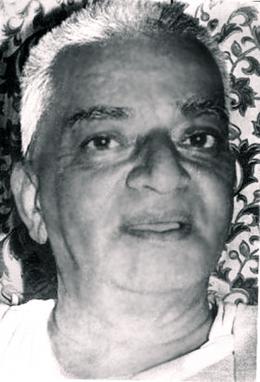G. P. Rajarathnam facts for kids
Quick facts for kids
G. P. Rajarathnam
|
|
|---|---|
 |
|
| Born | 1909 Gundlupet, Chamrajnagar, Karnataka, India |
| Died | 1979 (aged 70) |
| Pen name | Bhramara |
| Occupation | Story writer, lyricist, author, poet, translator, editor |
| Language | Kannada, Pali, Prakrit, English |
| Nationality | Indian |
| Alma mater | Master of Arts |
| Genre | Children's literature, Biography criticism, interpretation, fiction, prayers and devotions, poetry |
| Notable works | Rathnana Padagalu, Nagana Padagalu |
| Spouse | Lalithamma, Seethamma |
| Relatives | Sridhar (son)Shaila Sridhar Rajarathnam (daughter-in-law)Srimathi Sampathkumar (daughter) and Srilata Vijayakumar (daughter) |
G. P. Rajarathnam (1909–1979) was a famous writer, lyricist, and poet from Karnataka, India. He was also known by his pen name, Bhramara, which means "Bee". Rajarathnam was especially loved for his children's poems.
A well-known poet, Nissar Ahmed, once said that Rajarathnam truly understood what children needed and how they thought. Some of his writings are still hard for translators to perfectly capture today. Rajarathnam wrote about different religions like Buddhism, Jainism, and Islam. A road in Bengaluru is named after him to honor his contributions.
Contents
Rajarathnam's Early Life
Rajarathnam was born in 1909 in Gundlupet, a town in Chamrajnagar, Karnataka. His family originally came from a place called Tirukkanapur agrahara in Tamil Nadu. They moved to Mysore, Karnataka, in 1906. Rajarathnam was married to two women, Lalithamma and Seethamma.
His Amazing Career
Rajarathnam was a very busy writer! He wrote 230 different works, which were published in 338 books. Some of his most famous books include Rathnana Padagalu (meaning: Ratna's words) and Nagana Padagalu (meaning: Naga's words).
He also wrote many popular children's poems. These include Nayi Mari Nayi Mari (meaning: Puppy dog, puppy dog), Bannadha Thagadina Thuthoori (meaning: Colorful metalfoil trumpet), and Ondhu-Yeardu (meaning: One-Two). His writings were special because they brought together ideas from many different religions. He even taught the famous Kannada poet Dr. Shivarudrappa.
"Put me in hell, slit my tongue, stitch up my mouth, I’ll still sing kannada songs through my nose,"
Rajarathnam loved his language, Kannada, very much. He once said that even if he faced great difficulties, he would still find a way to sing Kannada songs. This shows how passionate he was about his mother tongue.
Some of His Books
Here are a few of the many books G. P. Rajarathnam wrote:
- Sūryamitra modalāda Jainara kategaḷu (meaning: Sun's friend included Jain stories) – 1975
- Hattu varuṣa (meaning: Ten years) – 1939
- Namma Oḍeyara kathegaḷu (meaning: Our boss's stories) – 1974
- Nāgana padagaḷu – 1952
- Ratnana padagaḷu – 1945
- Gautama Buddha – 1936
- Yēsu Krista (meaning: Jesus Christ) – 1941
- Kandana kāvyamāle (meaning: Baby's poem garland) – 2008
- Cīnādēśada Bauddha yātrikaru (meaning: China country's Buddhist travellers) – 1932
- Nūru puṭāṇi (meaning: 100 child) – 1940
Songs for Films
G. P. Rajarathnam also wrote lyrics for many films. This means he wrote the words for songs that were sung in movies. Here are some of the films he worked on:
- Olave Mandara (2011)
- Kallara Santhe (2009)
- Suntaragaali (2006)
- Gokarna (2003)
- A (1998)
- Chitrakoota (1980)
- Mother (1980)
- Havina Hede (1981)
- Devadasi (1978)
- Anireekshitha (1970)
Famous Songs He Wrote
One of his well-known songs is:
- "Helkolokondoru"

